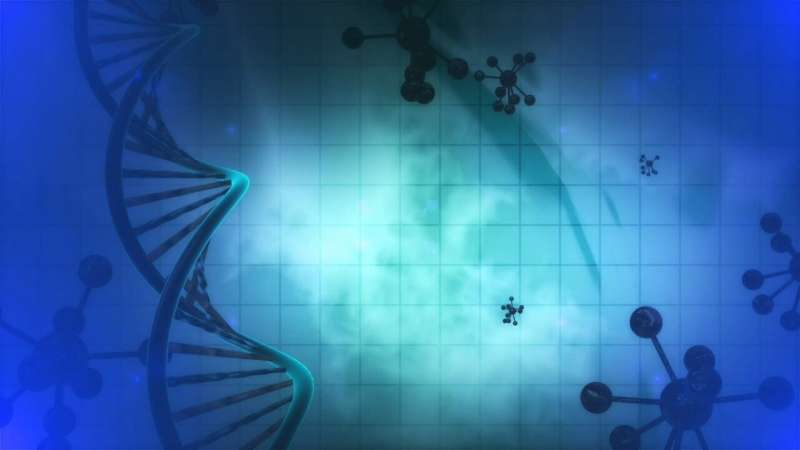Biologists track DNA 'parasites' in the hunt for disease treatments

They are considered "parasitic genes." Even though they comprise over half of human DNA, much remains to be learned about them. Now University of California, Irvine biologists offer new insights into these entities known as transposons, providing knowledge that could one day help in the fight against cancers and aging-related diseases.
Their study appears in eLife.
Unlike genes that encode proteins needed for us to function, transposons make proteins solely to copy their own DNA and insert it other elements. "They are selfish parasites," said study leader Grace Yuh Chwen Lee, assistant professor of ecology & evolutionary biology. "They perpetuate themselves and, most of the time, they don't do anything for us."
Almost all species contain transposons and have developed chemical modifications that stop their continued replication. But the percentage of transposons varies widely across genomes. It ranges from 50 percent in humans and 65 percent and salamanders to just six percent in puffer fish. Even among different kinds of fruit flies, the figure varies from two to 25 percent.
The UCI biologists sought to understand what has caused this variation. Their inquiry stemmed from earlier research by Lee and colleagues showing that those chemical changes preventing transposons from replicating have what the team calls "nasty side effects." The chemical modifications themselves spread to neighboring genes and disrupt their functioning.
"In this new investigation, we found that these side effects varied in strength and harmfulness," said Lee. "We learned that over time, species whose side effects were especially detrimental to adjacent genes experienced stronger selection that removed transposons. This resulted in a lower percentage of transposons in their genomes now."
The team also discovered that the variation in side effect severity may have stemmed from the genes manufacturing and distributing the chemical modifications. The biologists plan to further explore this issue in upcoming research.
Transposons have already been linked to some rare inherited diseases. More recently, scientists have found they are activated in aging brains and certain cancer cells.
"While their role in these respects is still unclear, it may eventually be possible to develop treatments by altering the genes that produce those chemical changes," Lee said. "We also would like to explore whether considerations such as diet and the environment, which are known to influence how cells distribute the chemical modifications, have an effect on transposons."
Postdoctoral scholar Yuheng Huang served as the paper's first author.
More information: Yuheng Huang et al, Species-specific chromatin landscape determines how transposable elements shape genome evolution, eLife (2022). DOI: 10.7554/eLife.81567
Journal information: eLife
Provided by University of California, Irvine





















